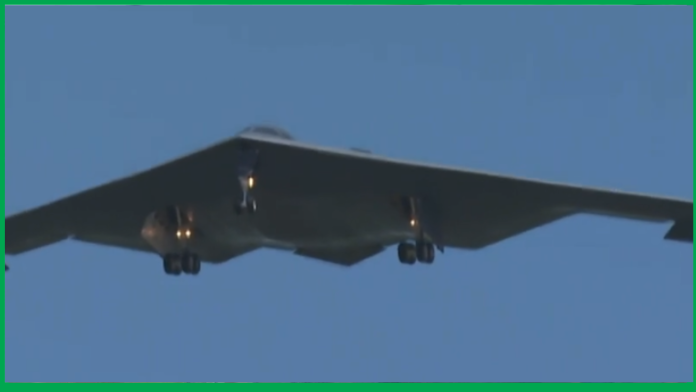It was an unprecedented strike, years in the making, amplified by last-minute deception that ensured maximum surprise. Early Sunday, U.S. pilots dropped 30,000-pound bunker-buster bombs on two of Iran’s underground uranium enrichment facilities, delivering what American military leaders describe as a crippling blow to Tehran’s nuclear ambitions. The operation, seen as a response to what Israel considers an existential threat, followed over a week of Israeli airstrikes targeting Iran’s military and air defenses.
U.S. Navy forces reinforced the assault, firing dozens of cruise missiles from a submarine toward additional nuclear sites. Dubbed Operation Midnight Hammer, officials hailed the attack as a “precision strike” that “devastated the Iranian nuclear program,” though they acknowledged damage assessments are still underway. Iran, meanwhile, denied that the strikes caused significant harm and vowed retaliation.
Stealth and Surprise
Launching from U.S. bases in the heartland, B-2 Spirit stealth bombers delivered a total of 420,000 pounds of ordnance, supported by a fleet of refueling tankers and fighter jets, some of which launched their own weapons. U.S. officials say Iran neither detected the incoming aircraft nor fired a shot.
The mission relied heavily on deception. Even before takeoff, misdirection was in play. On Thursday, former President Trump publicly suggested he would decide within two weeks whether to strike Iran—a calculated move meant to deflect attention from the imminent assault. On Saturday, one group of B-2s flew west toward the Pacific as decoys, drawing the gaze of amateur plane spotters and media. Meanwhile, seven other B-2s, each armed with two bunker-buster bombs, flew east under strict radio silence to avoid detection.
Only a select group of planners and top leaders in Washington and at U.S. Central Command in Florida knew the full details, said Air Force Gen. Dan Caine, Chairman of the Joint Chiefs of Staff.
After 18 hours of covert flight and aerial refueling, the B-2s arrived undetected in the Eastern Mediterranean. From there, they launched their attack, escorted by stealth fighter jets and reconnaissance aircraft.
A Pentagon-released map showed their flight path passing over Lebanon, Syria, and Iraq. It remains unclear whether those governments were notified. Most U.S. lawmakers were also kept in the dark, though a few received brief, last-minute updates from the White House.
“Our B-2s went in, struck, and returned home without the world noticing,” said Defense Secretary Pete Hegseth.
Coordinated, Multi-Phase Assault
Roughly an hour before the bombers entered Iranian airspace, a U.S. submarine launched over two dozen Tomahawk cruise missiles targeting key facilities, including a uranium processing site in Isfahan.
The B-2s, scanning for enemy fighter jets and air defenses, encountered no resistance. At 6:40 p.m. Washington time—2:10 a.m. in Tehran—the first bomber released two GBU-57 Massive Ordnance Penetrators over the Fordo uranium enrichment plant, deeply buried beneath Iranian soil. It marked the first combat use of these 30,000-pound bunker-busters, designed to penetrate hardened targets before detonating. Additional bombs struck the Natanz uranium enrichment facility, while Tomahawk missiles hit a third nuclear site at Isfahan.
Both Iran and the U.N. nuclear watchdog reported no immediate signs of radioactive contamination at the sites.
By the Numbers
The operation included:
- 75 precision-guided munitions, including 14 GBU-57 bunker-buster bombs and more than two dozen Tomahawk cruise missiles.
- 125 aircraft, comprising B-2 bombers, fighter jets, and aerial refueling planes.
- At least one female B-2 pilot participated in the mission, though officials declined to release her identity.
A Historic Mission
General Caine emphasized the mission’s historical significance, noting it as the largest B-2 operational strike and the second-longest B-2 mission ever, surpassed only by those flown after 9/11.


